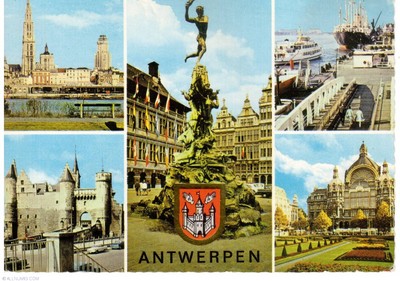
In 2006, Linda Loppa left the Royal Academy of Fine Arts in Antwerp after nearly 25 years as head of the fashion department. Still recognized as one of the most important figures in fashion education, she influenced generations of future designers during her time in Antwerp, including Raf Simons, Veronique Branquinho, Haider Ackermann, Kris Van Assche, and, in her final year, a young Demna Gvasalia. Loppa had first attended the Academy as a student in the late 1960s and returned to teach in 1981, while also running Loppa, her legendary Antwerp boutique, opened in 1978 and known for its avant-garde selection of designers including Helmut Lang and Claude Montana. Loppa and Gvasalia have kept in touch during the 15 years since they both said farewell to the Academy, so he suggested they catch up on the phone for System to discuss their time in – and since – Antwerp, the point of fashion schools, and the art of learning when to stop.
Linda Loppa: Hello, Demna, how are you?
Demna Gvasalia: I’m fine. How are you? It’s so nice to have this conversation! Where are you living now?
Linda: In Florence. We lived in Paris for two years, but we were missing something…
Demna: The weather? I also like a warm climate; I need sun and the sea, sometimes.
Linda: Actually, just today I was thinking that Florence is becoming a luxury capital, with expensive living, nice palaces and luxury housing, and maybe Paris is more like a provincial city, where neighbourhoods have more of local feeling.
Demna: I agree. You know, I like Paris as a city, though. I also like New York; I was there recently and although it’s not my city, I feel like it has great energy and it’s fun.
Linda: Last time we were in Paris we visited the Palais de Tokyo for the Anne Imhof exhibition. It was amazing!
Demna: Did you visit Pinault’s Bourse de Commerce?
Linda: Yes – wonderful!
Demna: A lot of young kids are moving from London to Paris right now. There is a kind of new energy here.
Linda: I had a similar sort of feeling in 2015, when my husband and I moved to Paris from Florence around the time of the Bataclan attack. It was a kind of
emotional moment, when it felt like the people of Paris needed a hug, a friendly gesture – a human gesture.
Demna: That’s a bit like the Covid situation, too – we need more community. We have learned something about communicating in a different kind of time with the lockdowns. There was a new feeling. In the first weeks of lockdown, when I was at home with my husband, I was kind of depressed, but then I started dressing up, wearing high heels, shirts, reinventing my wardrobe. It was so much fun!
Linda: I felt an urge to write. I felt stimulated to change the world… of fashion, at least. I thought I would try to change the world on my own, but suddenly I
connected with many friends all over the world through Zoom, and that gave me a new feeling of community. I could connect again, digitally, and I became more aware of remote working, even enjoying the new situation.
Demna: It was more of a trauma for me, to be honest. How do you explain to someone over Zoom how to make a sleeve or shoulder line? English is not my first language, and it’s not the first language of the people in the atelier, either. It was like, ‘Could you pin the sleeve a bit higher…? Could you…?’
Linda: How funny! Maybe you should write a book, a manual: how to work online, with this new language. How to explain over Zoom how to make a garment. How to cut a sleeve on Zoom!
Demna: [Laughs] Good idea! I was so happy we still actually managed to do a show this October. Well, not a full fashion show, more like a gathering with friends.
Linda: You know, I can see seven, eight airplanes in the sky right now; we are definitely feeling freer after Covid, aren’t we? Making connections. And Demna, you are a super-good connector! You connect all generations, all styles, using all kind of different media!
Demna: I do like to play with new media, to experiment.
Linda: At home, I received that virtual-reality box and the scent by [olfactory artist] Sissel Tolaas for the Autumn/Winter 2021 show. It’s great!
Demna: We’ve also started with gaming. It’s a bit of an expensive project, but we said, ‘OK, let’s give it a try.’
‘One day, you looked at what I was working on,and you said, ‘Demna, think about who is going to wear your garment and who is going to pay for it.’’
Linda: It’s amazing how you have been able to capture different layers of society and different generations. Young kids know you and Balenciaga! That’s really a gift. And I want to ask you more generally, what are your thoughts about fashion education? Fashion schools are a kind of passage between one life and another, aren’t they?
Demna: They are a sort of twilight zone, in which you transit through some kind of creative adolescence. They are places where you look for yourself, but never
really find your true creative core. But it is also a time when you can learn how to dream and – with the right guidance – to express that dream through a vision. I think there are way too many fashion schools that give false hopes and career illusions to young people, just because they need the numbers, since they function as businesses first and foremost. One really good fashion school would be more than enough, globally. A really good one, though. And that does not exist today, in my opinion.
Linda: I agree. Close all the fashion schools and start from scratch! One school would be enough. It could be a non-zone, were you could find yourself.
Demna: You can try finding yourself, but because you are young, inexperienced and vulnerable, you may end up losing yourself in the process. Which is OK; it’s part of a creative process to be constantly searching for yourself. It makes you evolve; otherwise it can get pretty boring. And that process has to continue post-fashion school, throughout your whole career.
Linda: What would you change in fashion education? Do you feel that all these structures are old-fashioned?
Demna: I had a wonderful time, but I think the schools are stuck in their attempts to modernize. It’s pretentious. Ultimately, opening social media accounts and institutionally teaching students how to apply for jobs is not enough. The main raison d’être of fashion education should be to trigger the creative thought process and to explain how to come up with ideas that someone else will want and love. Maybe there shouldn’t even be teachers as such, but rather a free space in which young creatives can brainstorm, have fun and inspire each other. Loads of artistic workshops where people work in teams and just constantly come up with ideas, no matter whether they’re good or not. Someone should be there to support and organize, but there shouldn’t be a judgemental leader with subjective and personal aesthetic taste. That said, there should be product-oriented coaching, so students know how to make an actual product. It’s not about making crazy garments nobody will wear; it’s about who would buy your garment. You know, there was a moment at the Academy I will never forget. One day during my graduate
year, you looked at some of the things I was working on, which, honestly, were pretty bad, and you said, ‘Demna, think about who is going to wear your garment and who is going to pay for it.’ You told me that if I could imagine someone who would actually wear it, who would love it enough to buy it, I should go ahead and do it. That changed my perception of the responsibility of being a designer. That’s always in the back of my mind when I’m working, and I believe it truly helped to shape my design approach in the years after Antwerp. It was my main design guideline when I started Vetements, for example – and it still is, more than ever.
Linda: Oh! Maybe I said that because I was also a retailer…
Demna: Yes, but not only that. You really made me think about my responsibility as a designer.
Linda: Wow, that’s great! But you’re right, it is not about ‘me’, but about ‘we’. Now you are at the top, what’s next?
Demna: I don’t know! What do people do when they get to the top of something? I guess they enjoy the view. [Laughs] I’m rarely fully satisfied with myself, so there is always another hill to climb, and I’ll keep doing that as long as I have fun and it makes me happy. But the view is nice, too – it feels a lot like freedom. Do you go to Antwerp often?
Linda: No, not really. Can you imagine: you and I left Antwerp in 2006, so we have that in common.
Demna: I don’t go back, either, because I want to keep my memories. I’m a bit nostalgic, and I feel it changed a bit. I was so free in Antwerp, like living in this inter-zone, that kind of twilight zone. I could experiment without stress and enjoy life without thinking about the future. Of course, in the end I felt I needed a job and I sent about 90 portfolios to companies.
Linda: Society changed, and we changed. You graduated in 2006 and built a career in 15 years after school. We could say you are an example for young kids – but will they have the patience that you had?
‘Too many fashion schools give false hope to young people, just because they need the numbers, since they function as businesses first and foremost.’
Demna: Patience is not my forte, actually, and I think it would not be enough, today. What is super important is pertinence, and not being afraid to fail. You know, it’s about being able to fall down, but then stand up again and keep moving forward. You have to be able to do that over and over again and keep going, keep believing in yourself if you are really into something. Most importantly, do not listen to anyone who tries to scare or demotivate you. In fashion, forward is the only correct direction. That’s how you get the desirability I have to feel in fashion. So if I don’t feel like I’m still passionate about my job any more, I will stop. I’m absolutely not going to work into my 80s like Karl Lagerfeld.
Linda: Never say never! [Laughs] Is competition important for young designers? Do schools prepare them for those big moments?
Demna: Competition can be very healthy and can push your creativity into unknown and exciting places, but it should never be about proving anything to anyone. That’s when it becomes toxic. Fashion schools are usually too good at creating that type of toxic competitive environment. Sissel Tolaas once told me that, ‘Creative collaboration is a new, modern form of competition.’ I truly think that there is something pretty genius about that idea.
Linda: That is an interesting idea. What I find amazing is how you’ve closed the gap between pop culture and luxury. Is fashion a spectacle?
Demna: At the moment, it’s a bit of a cheap spectacle with loads of meaningless ‘special effects’ and brouhaha. It’s pretty much a pretentious circus and it’s mainly money-oriented. At the same time, fashion has turned into part of the entertainment business, too. That is OK, but I’m afraid it’s losing touch with its most important commodity: the clothes. I am so bored with what I see happening at the moment. That’s why I just do my thing and what I like. I’m excited by the hope that the general mediocrity, boredom and flatness that dominates fashion today will trigger the release of new creative energy and ideas.
Linda: Is the future bright?
Demna: To be honest, it feels like the future is very, very cloudy right now. But I am an optimist – I believe the sun is always shining behind any scary cloud. I have a lot of hope in the younger generation and their intellectual capacity to understand the importance of the change we all need to make so the future can be bright. Having said that, I am also afraid, but then I think it’s good to be afraid. We need that if we want to change something.
Linda: But is fashion going in the right direction?
Demna: Fashion is going in very much the wrong direction, since its main destination right now is the bank – it needs to make a U-turn. To survive this ride, its main orientation needs to be creativity – it needs to stop working for merchandisers, market requests and financial goals. Those things are never going to help advance fashion! They’ll only ensure its degradation into a dysfunctional, boring, repetitive and uninspiring slot machine.
Linda: Are you happy?
Demna: I feel the happiest I have ever felt, because I have learned how to love myself: I am a designer, I know that I can innovate – and I enjoy it.
Linda: I wanted to ask you: how do you feel about second-hand shopping?
Demna: I like it! It’s fantastic because kids are doing it to save the world. They think about the planet and sustainability while they do it. They can wear couture without it costing the earth.
Linda: I am not convinced. If they buy a vintage leather jacket, it’s probably made with the skin of a mistreated animal. And people think they’re buying a unique item, but it’s still been mass-produced. It is more like a trend, I guess. Like when in the 1970s it was fun and experimental to wear hippie or vintage clothes. I studied in the Royal Academy of Fine Arts for seven years – three years of artistic humanities and four years of fashion design – and it was so much fun! It was end of the 1960s, beginning of the 1970s. There was a sort of post-Covid excitement. The Academy and Antwerp made me the person I am today. But now let’s close all the fashion schools and all the vintage stores! Oh, sorry – I am too rebellious and radical! Hey Demna, thank you for this great conversation!
Demna: Linda, when you are in Paris, call me and we’ll get a coffee.
Linda: Oh, with pleasure. Big hug. Have a nice evening.
‘If I don’t feel like I’m still passionate about my job any more, I will stop. I’m not going to work into my 80s like Karl Lagerfeld.’
‘These images represent Antwerp to
me, and since Linda Loppa is directly
connected to my time in Antwerp,
I think they are pretty symbolic.’
Demna Gvasalia
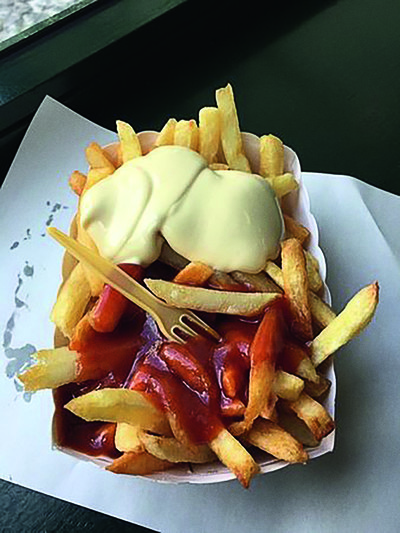
The best ‘French’ fries ever.
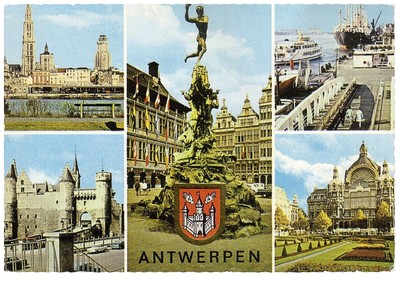
An old found postcard of Antwerp.
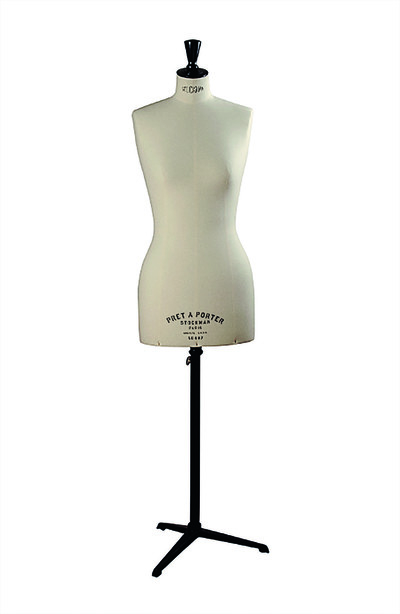
A Stockman mannequin was the first thing I had to buy when I moved to Antwerp, and a huge investment for me back then.
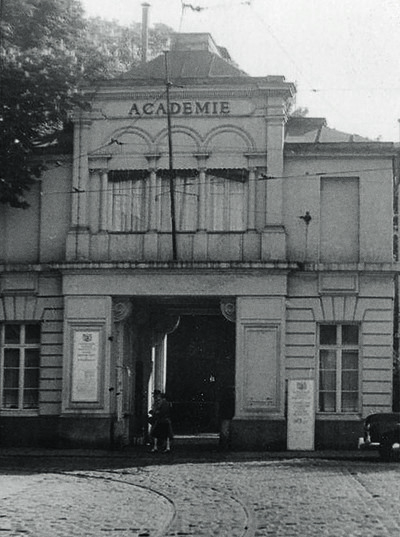
The Royal Academy building that housed the fashion school and in which Vincent Van Gogh learned to paint.
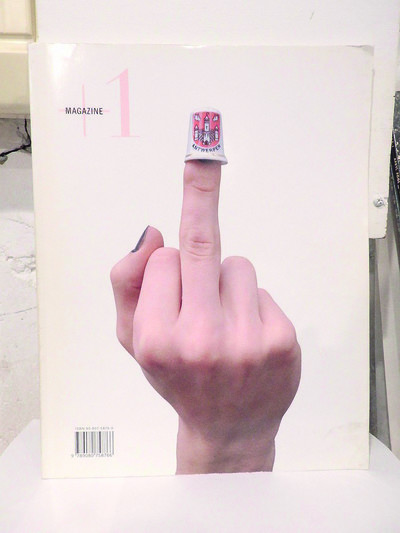
+1, a student magazine that we created as a group graduate project.
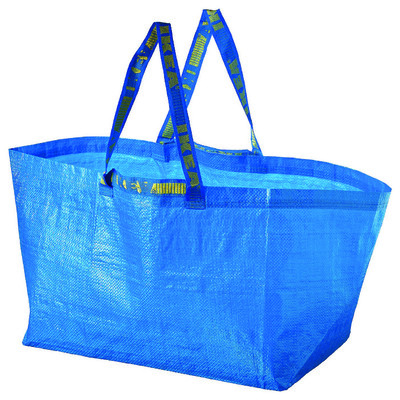
A blue IKEA bag like those that I and all the fashion students would use
to transport the Stockman and our voluminous prototypes.